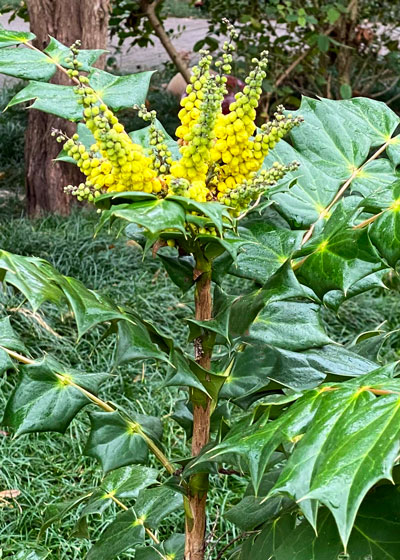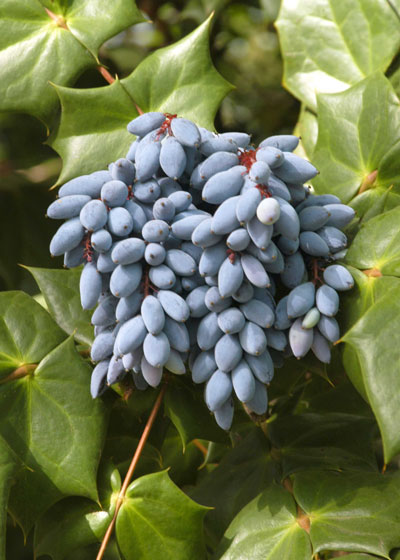Leatherleaf Mahonia Heralds the Spring

It’s always in bloom over the first days of January, at least where we live in rural Collin County just north of Dallas. It’s leatherleaf mahonia, and it’s one of my go-to plants for the heavy shade cast by dozens of native pecans that surround our 45-year-old house.
I love the dramatic look that this plant brings. It grows like its cousins, nandinas – with leaves arranged horizontally along single stalks that produce only a few side branches. Massed together in plantings, these mahonias make a wonderful barricade of spines and showy foliage, flowers and fruit.
On warm days honeybees come out to pollinate the flowers, and the blooms are then soon followed by clusters of blue-gray, grape-like fruit that will ripen in mid-spring. They’re favorites of birds, so yes, you’re likely to see one or two seedlings come up in your beds. Not to worry, however. They’re easily dug and shared with other mahonia lovers.

Here are your basic facts…
I’ll summarize what you’ll want to know.
• Leatherleaf mahonia Mahonia bealei.
• From the Barberry Family.
• Hardy to USDA Zone 7.
• Native to China.
• Individual plants grow to 6-7 ft. tall and 4-5 ft. wide, but they spread slowly by suckering. Best used in clumps or masses.
• Adapted to all but the coldest parts of Texas so long as their sunlight needs are met (shade or part shade – not good in full afternoon sun).
• Adapted to moist soils, but does best in highly organic soils that can be kept moderately moist.
• Withstands dry conditions fairly well, and handles cold well, although I did lose a few stems last February. I trimmed them back to the ground and new growth filled in from below.
• Easily pruned with lopping shears when one of the branches grows astray.
• In the 40 years that I’ve grown them, I’ve never seen an insect or disease bother them, nor have I ever taken a call concerned any kind of a pest problem from one of my listeners.
